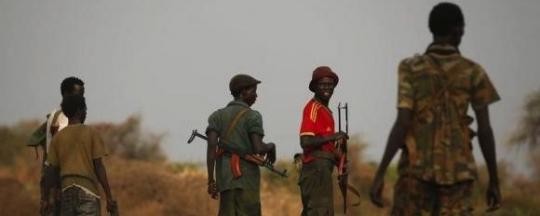Explaining the S Sudan peace agreement (12): Does the ceasefire apply to allied forces?

'Focus on the Agreement' is a new daily segment broadcast on Radio Tamazuj to explain the contents of the peace deal signed in August 2015 between South Sudan's warring parties.
In the previous episode in this series, we looked at what the peace agreement says about elections, according to the final section of the first chapter of the agreement. Today we move to the second chapter, which discusses security issues.
Article 1 of Chapter II of the peace agremenet says the permanent ceasefire between the two parties must be declared by both sides. This as already been done and as such the ceasfire is currently in force. The agreement also says that the warring parties have a responsibility to spread the news about the peace deal to their forces and to their allies and to ensure that they comply.
The warring parties must not carry out attacks or conduct hostile actions such as aggressive movements of troops or hostile propaganda.
Moreover, the permanent ceasefire must be respected by all militias and allies of both the government led by Salva Kiir and the armed opposition led by Riek Machar.
Another important part of this section is that it mandates the withdrawal of foreign allied forces from the territory of South Sudan within 45 days of the signing of the agreement. Because 45 days have already passed, this withdrawal is supposed to be already completed.
The only exception is Western Equatoria State, where the Ugandan army had some forces since before the start of the civil war in order to hunt the Lord's Resistance Army. The Ugandans are permitted to keep troops in this state only, according to the terms of their earlier agreements with the South Sudanese government prior to the civil war's start.
Tomorrow we will continue to look at the security arrangements.